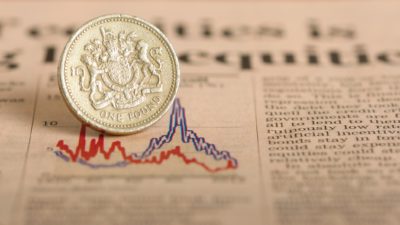At a share price of 118p, Kier (LSE: KIE) is trading at just 2.4 times this year’s forecast earnings. What’s behind the construction and outsourcing firm’s extraordinarily low rating? And could the stock be the buy of the decade?
High hopes
Philip Cox was full of optimism when he arrived as the company’s new chairman in 2017. Commenting on his appointment, he said: “There are clear opportunities for Kier in each of its market sectors and I am excited about the prospect of working with the management team to grow the business.”
Two years on, four of the five executive directors have been replaced, and the company has announced it’s selling or discontinuing its businesses in half the market sectors in which it operates. Last month, Cox informed the board he will step down once a successor has been appointed.
Between the announcements of his arrival and departure, Kier’s shares lost 91% of their value. What went wrong? And can the new management team put things right?
Bears smell blood
Following the liquidation of Carillion in January 2018, short positions in Kier increased rapidly though the spring and summer. Hedge funds reckoned Kier had many of the same issues, and positioned themselves to profit if its share price collapsed.
Kuvari Partners was one such fund, and the Financial Times reported on its short thesis on 28 November 2018. Kuvari suggested Kier was not only a low-margin business and vulnerable to economic cyclicality, but also used ‘aggressive’ accounting methods.
It reckoned the company’s presentation of adjusted cash flow was misleading. This showed a cumulative inflow of £95m over the five years to 2018. Kuvari’s calculations put the true figure as an outflow of £209m. It also reckoned that taking into account Kier’s ‘hidden leverage’, its net debt-to-EBITDA ratio was a whopping 6.8 times. And that it desperately needed to raise cash.
Two days after the FT reported on Kuvari’s short thesis, Kier announced a £264m rights issue.
No desire to gamble
Despite the rights issue, year-end net debt this year of £167m was only £19m lower than last year, and disastrously below management’s guidance earlier in the year of a net cash position. Furthermore, average month-end net debt after the rights issue was no lower than last year’s £375m.
Meanwhile, we’re another year closer to the expiry of the majority of Kier’s banking facilities in 2022. The company has previously warned that “a number of lenders have indicated an intention to reduce their exposure to the construction and related sectors,” which could adversely impact its ability to renew or find alternative banking facilities.
Management has its work cut out, and there are many uncertainties and risks for investors. How much will the company manage to raise from asset sales? What will the costs be for discontinuing businesses? How quickly can management reverse last year’s £83m net cash outflow from operating activities? How vulnerable would the company be in the event of a post-Brexit recession? What will happen when it comes to negotiating the renewal of its banking facilities?
It’s possible the current Kier share price could turn out to be the buy of the decade … or another disaster in this troubled sector. With very little visibility on the company’s near-term and longer-term outlook, and having no desire to gamble on it, I’m happy to avoid the stock.







